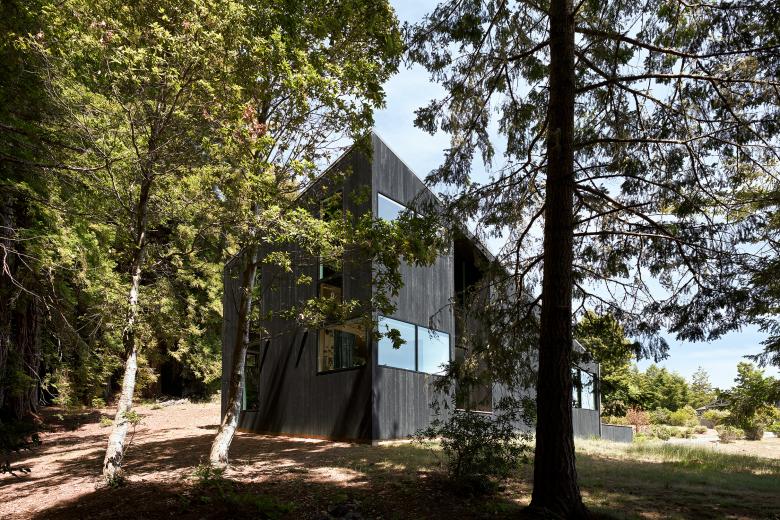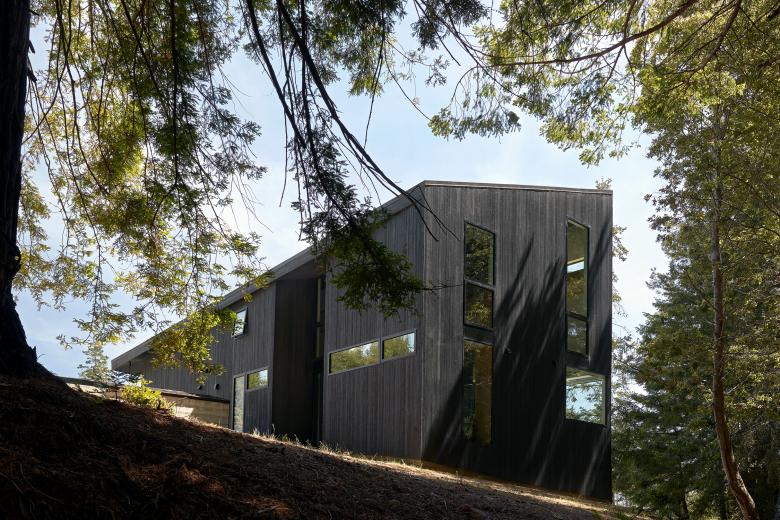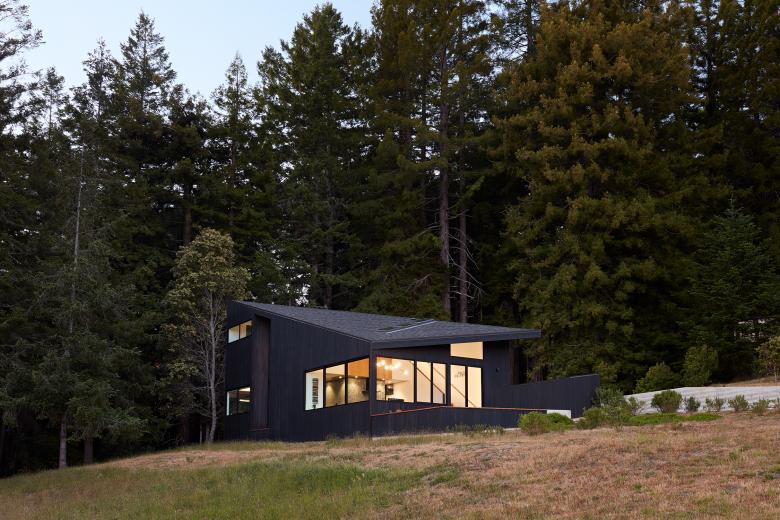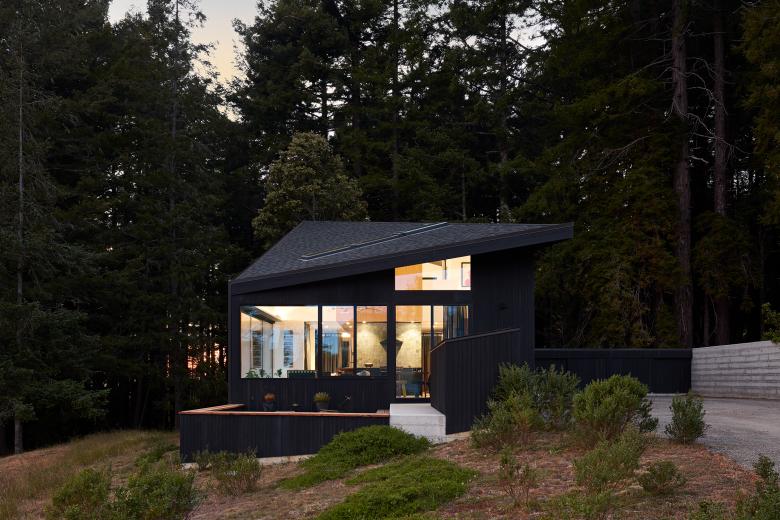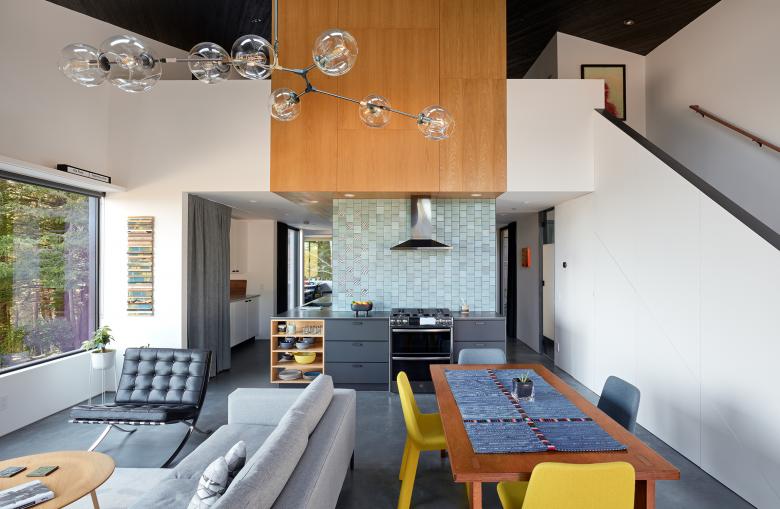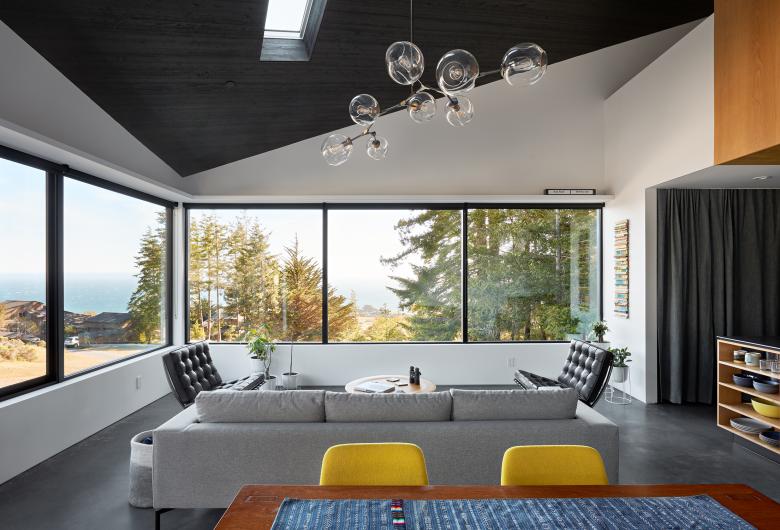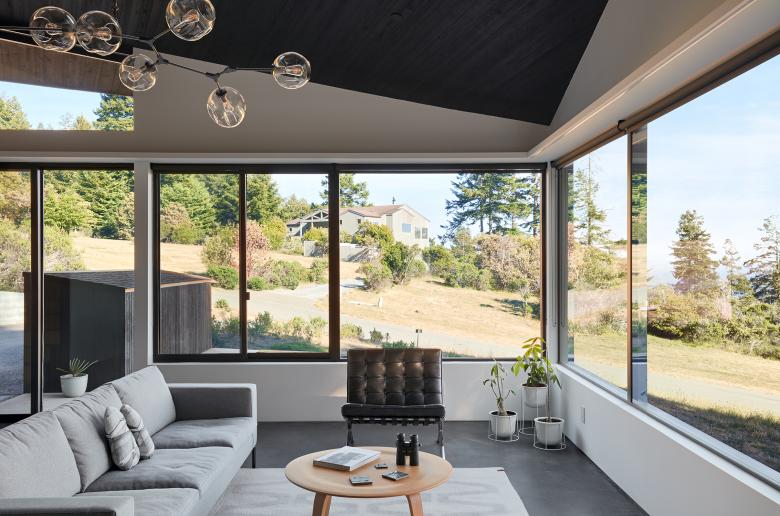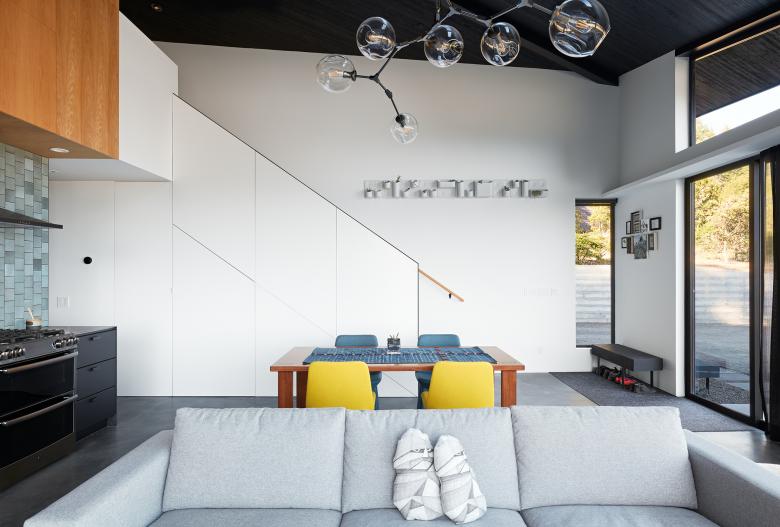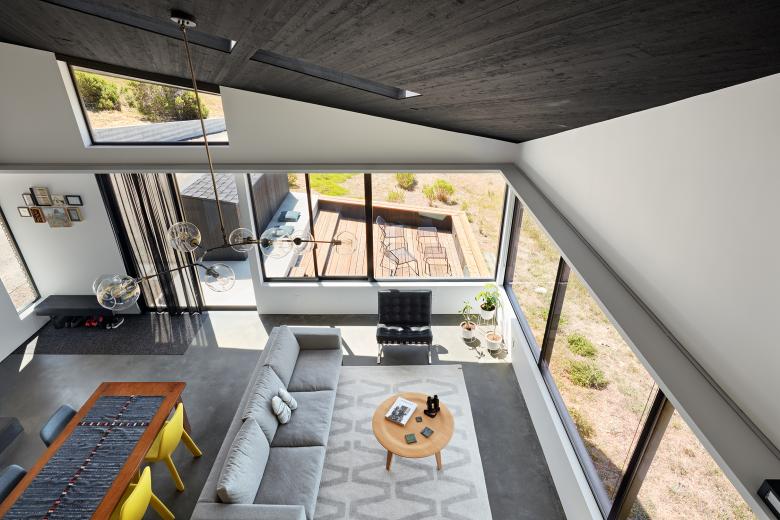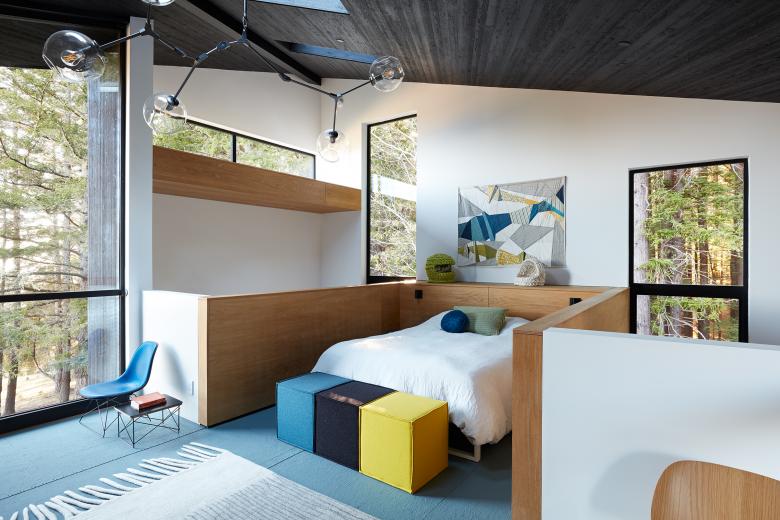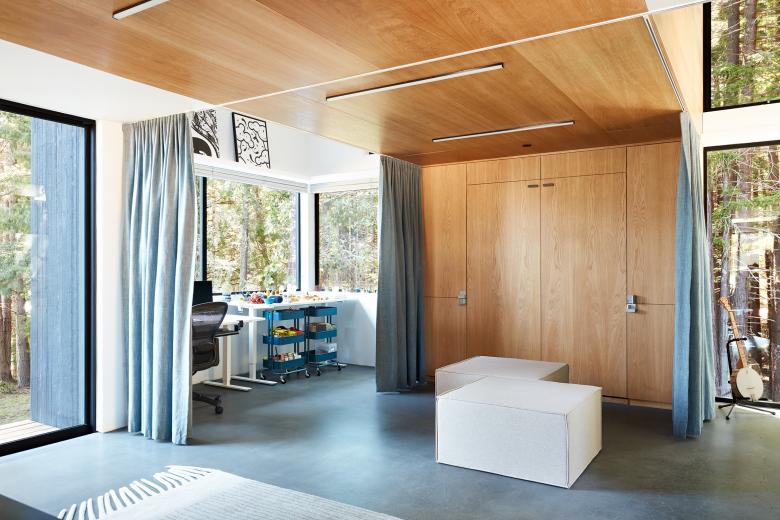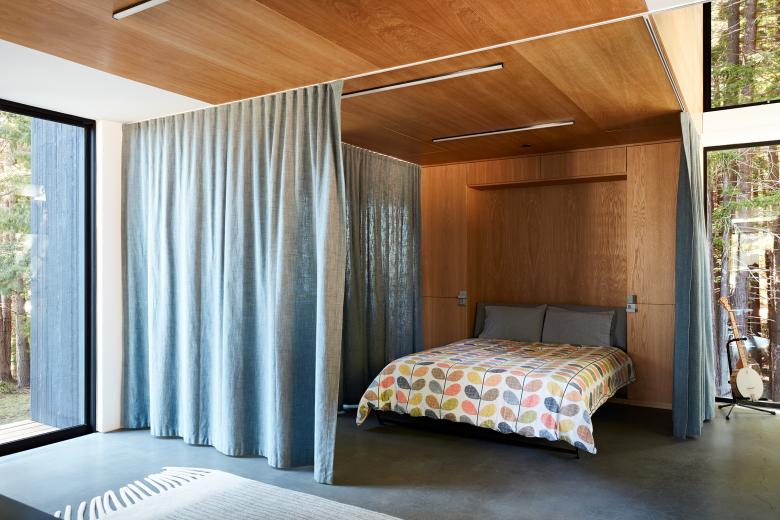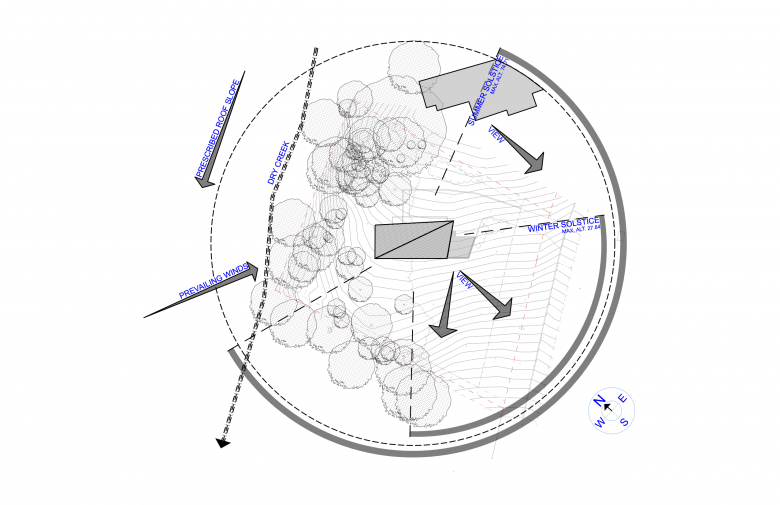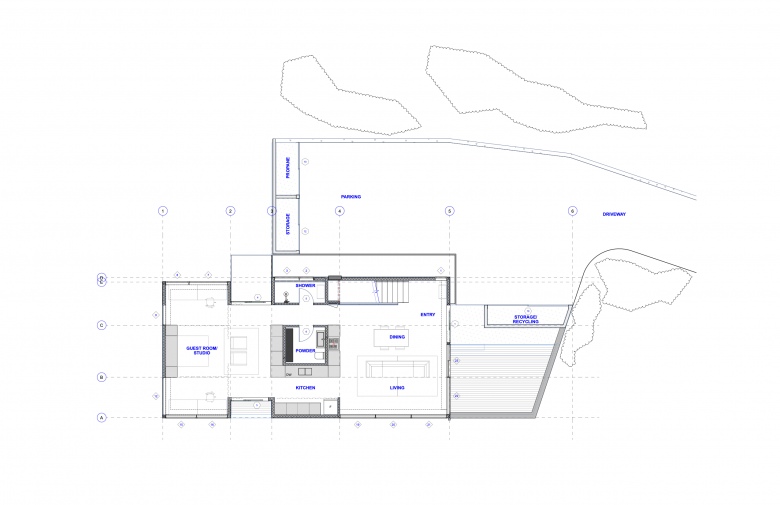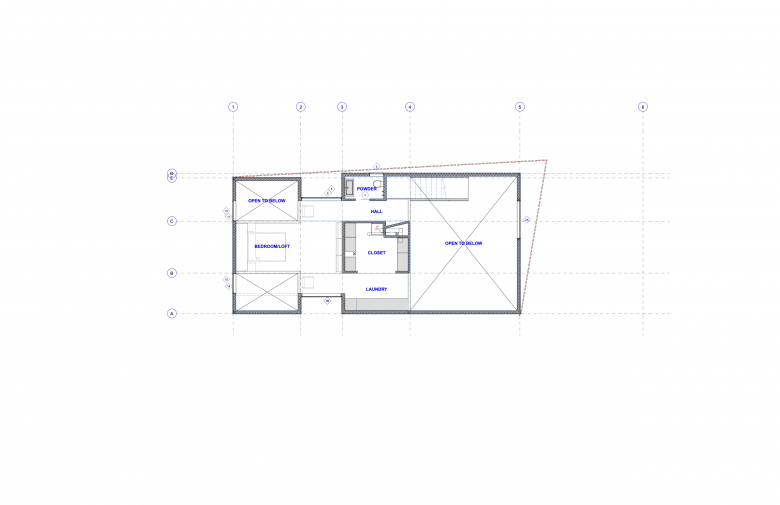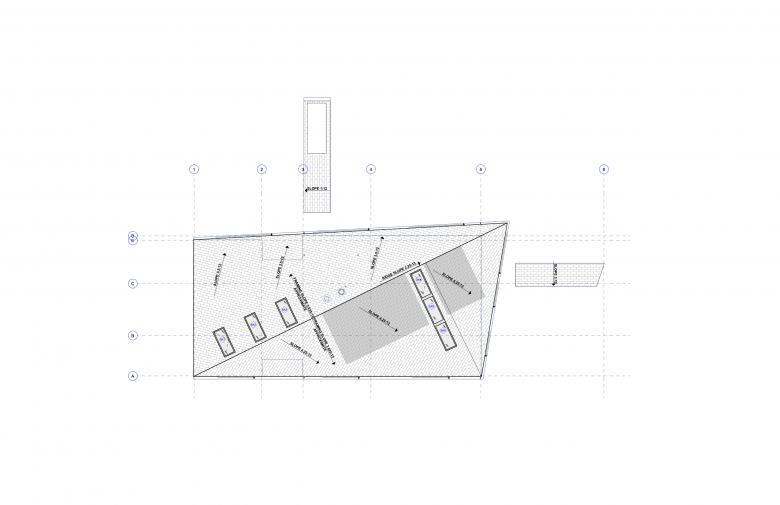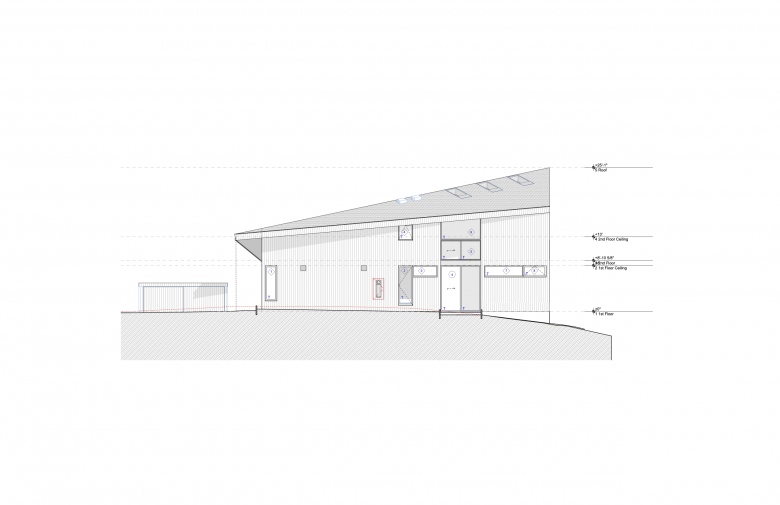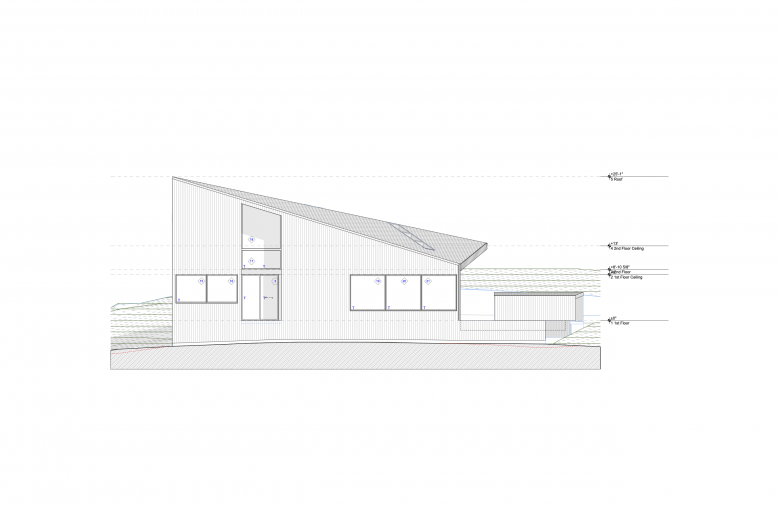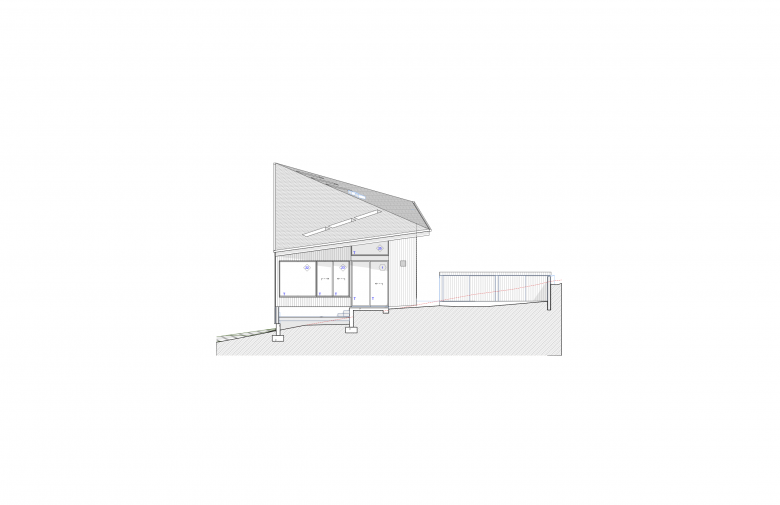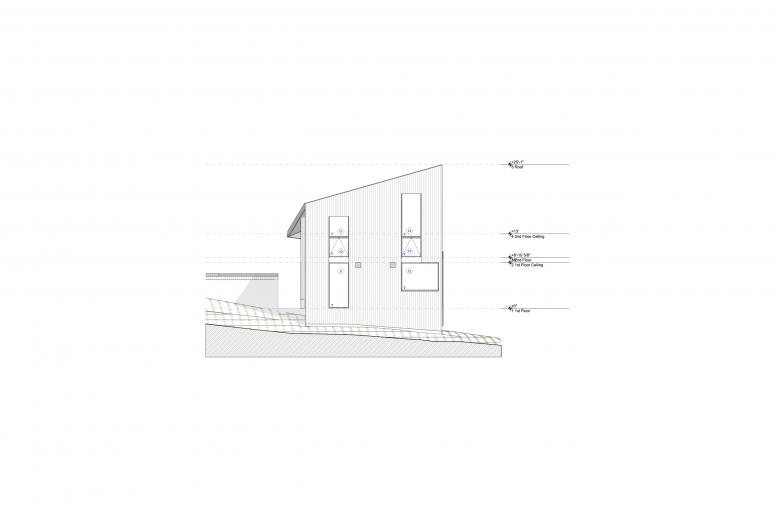US Building of the Week
Castle Black at Sea Ranch
Klopf Architecture
31. January 2022
Photo © Mariko Reed
Situated on a ten-mile stretch of rocky Northern California coastline, The Sea Ranch is a famous residential development laid out by Lawrence Halprin in the 1960s and featuring distinctive timber-frame structures designed by Charles Moore, Joseph Esherick, and others. Klopf Architecture has added a vacation home to the mix, integrating the small structure into its surroundings. Architect Geoff Campen answered a few questions about Castle Black at Sea Ranch.
Location: Sea Ranch, California
Architect: Klopf Architecture
- Project Team: Geoff Campen
Structural Engineer: ZFA Structural Engineers
General Contractor: Empire Contracting
Photo © Mariko Reed
What were the circumstances of receiving the commission for this project?This was a house we designed for ourselves — so no competition for the architectural services!
Photo © Mariko Reed
Please provide an overview of the project.True artists inspired by socially relevant modern design, architect Geoff Campen and designer Diana Ruiz designed a new minimal, modern, open home they would call their own. It was important that the design of their new house engage closely with the contours and characteristics of the landscape. The former San Francisco city dwellers fell in love with Sea Ranch with the consistency and inventiveness of its designs and the careful architectural connections to the land.
Photo © Mariko Reed
The house with its dark stained siding rises upward toward the back where it blends with the pine and redwood forest behind it. The bedroom loft captures views of the forest through tall vertical windows that mimic the trees outside. A steep sloping roof line flows downward where the living spaces have wider horizontal windows framing the seascape.
Photo © Mariko Reed
A truly open floor plan includes just two enclosed bathrooms while the rest of the flex spaces are divided by a series of curtain systems and separated floors. The functional kitchen wraps around a central core allowing for unobstructed views of the ocean and forest throughout most of the house.
Photo © Mariko Reed
What are the main ideas and inspirations influencing the design of the building?The two main factors for the design of the volume are the relationship with the site, and the requirements for the structures in The Sea Ranch. Because of the unique site, with the forest in the back and the open view to the ocean in the front, a lot of the design came from this interaction. The house rises and is more vertical among the trees, and appears more horizontal in the meadow facing the ocean. The windows and interior spaces also follow the vertical/horizontal orientation.
Photo © Mariko Reed
On the interior, we wanted an open plan where you always had some connection to the outdoor environment. Pretty much anywhere you are in the house there is a view of both the ocean in the front and the woods in the rear.
Additionally, the open plan and spaces were designed to accommodate a more casual style of living, where the kitchen, living area, office/studio area, and even the sleeping rooms all merged into a more integral and interesting architectural space.
Photo © Mariko Reed
How did the project change between the initial design stage and the completion of the building?Not substantially. In order to protect the neighbors' views, the siting of the house was moved further to the rear among the trees. This ended up being a beneficial change as the feeling of the portion of the house among the trees is very serene and cooler (nice in the summer months). Additionally, it inspired the addition of the deck in the front of the house, which takes advantage of some whitewater ocean views.
Photo © Mariko Reed
Was the project influenced by any trends in energy-conservation, construction, or design?The project is very energy efficient and uses high-performance windows/glass, spray foam insulation, hydronic radiant heating in the concrete slab, and high efficiency water heating. Additionally the house is prepped for solar panels which we plan to add soon.
Photo © Mariko Reed
What products or materials have contributed to the success of the completed building?The house has a very simple palette of materials: dark stained siding, white oak paneling and cabinets, raw steel trim, exposed concrete floors, white painted walls. We feel the simplicity and natural finish of the materials connects well to the surrounding environment. Additionally the darker stained siding, which also extends into the interior ceiling, allows the house to minimize its visual impact and blend into the shadow line of the surrounding trees.
Email interview conducted by John Hill.
